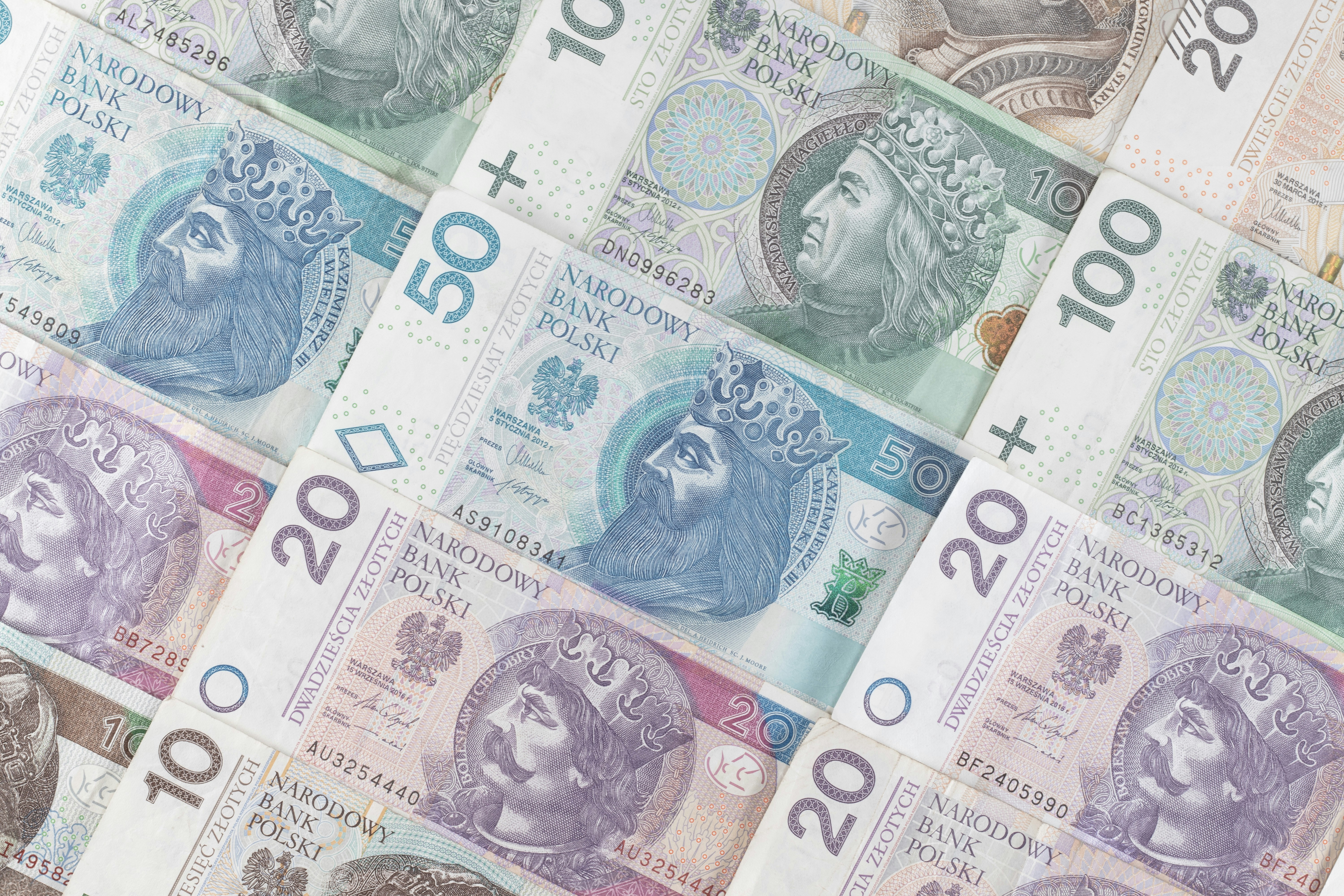Derivatives - What Is It?

Traders have been increasingly drawn to the concept of derivatives lately. These financial instruments are seen as more intricate tools compared to the ones that beginner traders typically use. Derivative contracts are special agreements between two or more parties that derive their value from the underlying assets like stocks, bonds, commodities, or forex currencies. In this guide will explore in detail the concept of derivatives as investment instruments, their types, important characteristics, as well as their advantages and possible risks.
Table of Contents
Key Takeaways
What Are Derivatives?
Types of Derivatives
Advantages and Disadvantages of Derivatives
How to Invest in Derivatives
Bottom Line
FAQs
Key Takeaways
-
Derivatives are financial contracts between two or more parties whose value is based on underlying assets.
- Four main types of derivatives include futures contracts, forwards, options, and swaps.
- Derivatives are primarily used for managing risk, betting on price changes, capitalizing on arbitrage chances, and leveraging positions.
- A derivative contract can be traded either over the counter (OTC) to benefit from customization and flexibility or on regulated exchanges to reduce risk and ensure standardization.
What Are Derivatives?
Derivatives are financial contracts whose value is based on the underlying asset like stocks, bonds, or commodities and which are used for speculation, hedging, and other financial goals. These financial instruments can be traded over the counter or on regulated exchanges like the Chicago Mercantile Exchange (CME).
Key features of derivatives include but are not limited to:
-
Standardized agreements. Derivatives consist of predetermined terms, such as the contract size, expiration date, and the asset that is involved. This simplifies the process of trading them on exchanges.
- Potential use of leverage. You can leverage your derivatives position. It means you get the ability to manage significant asset quantities with a relatively modest investment, potentially resulting in larger profits (or losses).
- Hedging ability. A derivative contract assists investors in guarding against unforeseen price decreases of the assets in their portfolio.
- Speculative possibilities. Derivative transactions allow traders to speculate on price changes without owning the underlying asset.
- Various forms. Futures contracts, options, forwards, and swaps serve distinct investment requirements, offering a variety of choices and flexibility in strategies.
- Liquidity. Derivatives stand out with higher liquidity due to their standardization and exchange trading, making it more convenient to buy or sell them.
Types of Derivatives
Different types of derivative products are used in the derivatives market to manage risks or for speculation. Having a clear grasp of these various categories is crucial for managing a position efficiently. Every derivative product offers distinct features and caters to particular financial strategies. In the following sections, we will examine the key types of derivative contracts, outlining their key features and use cases.
Futures
When referring to futures contracts, investors have to keep in mind that the underlying asset represented by this trading instrument is bent with the obligation of a predefined agreement to buy or sell at a set price on a specified date in the future.
Such exchange-traded derivatives are popular for being employed to bet on future potential fluctuations of such assets as commodities, currencies, and other financial tools. However, before adding futures contracts to the portfolio, every investor needs to know what comes with it. Here are the key details you need to know.
-
Standardization. Futures contracts are highly standardized. The exchange where they are traded determines the contract terms like the amount, quality, and delivery date of the asset traded. This guarantees good liquidity of funds and facilitates futures trading.
- Obligations for buyers and sellers. Both the buyer and the seller must adhere to the contract terms upon its expiration in a futures agreement. This implies the buyer must purchase, and the seller must sell, the underlying asset at the previously settled price.
- Daily settlement. Futures' value is updated daily based on current market prices, leading to profits or losses being determined at the end of each trading day. This daily settlement procedure ensures that the contract's market value is accurately reflected and any profits or losses are immediately realized.
Futures contracts are commonly used for hedging and speculation, like other derivatives, but their standardized form and great liquidity appeal especially to institutional investors and traders.
Forwards
This type of derivative represents a customized agreement between two parties to trade an asset at an agreed price in the future. One of the key differences between a futures contract and forwards is that the latter are traded over the counter and are not standardized. The deal terms, like amount, quality, and delivery schedule, are made specifically for the people involved.
The main characteristics of forward contracts are the following:
-
Customization. Forward contracts offer extensive customization options, enabling the parties to establish their desired terms related to the underlying asset, contract size, and expiration date.
- Counterparty risk. Forwards are traded over the counter, which increases the possibility of one party failing to meet their contractual obligations.
- No daily settlement. In contrast to futures, forward contracts do not require daily settlement, which are marked-to-market each day. Instead, these agreements are finalized at the end of the contract period. So, all profits and losses are only recognized upon delivery or contract expiration.
- Flexibility. Forwards don’t have strict standardization, allowing the contract holder to customize the agreement to meet specific hedging or investment requirements.
Businesses and financial institutions commonly utilize forwards for hedging specific risks with tailor-made terms.
Options
Options are derivatives that provide the owner with the choice, rather than the obligation, to buy or sell an asset at a predetermined price by a specific date in the future. Options, unlike futures, don’t imply obligation: they allow their holders to decide not to exercise the agreement if it is not advantageous for them.
Let’s have a closer look at the key features of options.
-
Non-binding. As mentioned above, in contrast to futures, the holder of an option has the right to not enforce the contract.
- Premium payment. When purchasing an option, the buyer gives a premium to the seller, which represents the option's cost.
- Customization. Choices can be extensively tailored in relation to the strike price, expiration date, and underlying asset, while standardized options are frequently exchanged on markets.
- Limited risk. The buyer's maximum loss is capped at the premium paid, in contrast to other derivatives that carry the potential for substantial losses.
Although options as well as forwards are quite flexible, options usually offer a lower level of customization since forwards are traded over the counter and tailored to specific requirements. Therefore, the counterparty risk in options is also lower than in forwards because clearinghouses in exchange-traded derivatives help reduce the risk of default.
Swaps
Swaps are types of derivative contracts that represent agreements between two parties to exchange cash flows or other financial instruments over a set period. An interest rate swap is a popular type of financial agreement in which parties trade cash flows determined by both fixed and floating interest rates.
Key features of swaps include:
-
Cash flow exchange. Parties trade cash flows, which may involve interest rates, currencies, or other financial measures.
- Customization. Swaps are more flexible than standardized futures and exchange-traded options, allowing for greater customization to meet specific financial requirements.
- Counterparty risk. Swaps, typically traded over the counter, involve a significant risk for the participants.
- Extended contract. Swaps usually come with longer periods, which makes them appropriate for handling long-term financial risks.
Cash Settlements of Futures
Cash settlements of futures is a unique kind of derivative. It implies that parties resolve the contract by exchanging cash instead of the physical asset. This financial instrument is especially appealing to investors who like to speculate and wish to steer clear of the practicalities of physical shipment. In cash settlements, there is no need to physically exchange the asset. The financial settlement is made based on the asset's price at contract expiration.
This form of settlement allows investors to benefit from market fluctuations without having to oversee the underlying asset. When they enter a contract to offset their positions, they can efficiently close them out, focusing only on price changes to make profits.
Advantages and Disadvantages of Derivatives
Derivatives are effective financial tools that provide various advantages, yet they also entail substantial risks. Investors must have a clear understanding of both the benefits and drawbacks to effectively use these instruments, improve their portfolios, and manage risks.
| Advantages of Derivatives |
Disadvantages of Derivatives |
| Hedging instrument |
Changes in the time before expiration |
| Use of leverage |
Leverage risk |
| Increased liquidity |
Counterparty risk |
| Lock in price |
Cost of holding the underlying asset |
| Flexibility |
Interest rates |
Advantages
-
Risk mitigation. Derivatives help investors hedge against market risk, enabling them to safeguard their portfolios from negative price fluctuations.
- Use of leverage. Leverage allows investors to control large positions with relatively small amounts of capital, this way increasing potential returns. However, don’t forget that leverage is a complex instrument that requires much knowledge and experience.
- Increased liquidity. Many derivatives, particularly those exchanged, provide significant liquidity, allowing investors to easily open and close positions.
- Lock in price. Derivatives allow investors to lock in the price of an underlying asset. This provides them with certainty and stability in planning for future financial needs.
- Flexibility. Derivative products enable investors to customize their strategies according to their individual financial objectives and risk tolerance.
Disadvantages
-
Changes in the time before expiration. As the expiration date gets closer, the derivative's time value decreases. It could cause a quick drop in its market value. This occurrence, referred to as time decay particularly impacts options.
- Risks of using leverage. Although leverage can increase profits, it can also lead to substantial losses. This instrument requires much expertise and experience to manage all the associated risks.
- Risk of counterparty default. While trading OTC derivatives, there is a risk that the counterparty could fail to meet its obligations, which could result in possible financial losses.
- The cost of holding the underlying asset. Costs related to storage, insurance, and maintenance are incurred for derivatives involving physical delivery or holding of the underlying asset. It’s important to remember that these expenses could diminish potential gains. Moreover, these costs associated with holding the derivative may decrease its appeal, leading investors to rethink their strategies.
- Interest rates. Changes in interest rates can affect the value of a derivative contract. Rising interest rates can raise the expenses of maintaining a position because of increased borrowing costs, whereas decreasing rates may lower potential profits.
How to Invest in Derivatives

Investing in derivatives can serve as a smart method to vary your investments and handle potential risks. Here are some crucial points to keep in mind.
-
Make sure you understand the basics. Understanding basic financial concepts is crucial before investing in derivatives. This knowledge will help you grasp how OTC and exchange-traded derivatives function and make informed trading choices.
- Speculation. One of the possible ways to get into derivatives is to use them for speculation. It means betting on their future price movements without actually owning them.
- Hedging. Derivatives are an efficient way for traders to protect their portfolios through hedging. A representative example is buying a put option and selling it at a set price, to protect your stock, against a decrease in its value.
- Exchange-Traded Funds (ETFs). Derivatives-focused ETFs are ideal for passive investors seeking diverse exposure to different markets, reducing personal risk while taking a hands-off approach to investing.
- Brokerage account. To invest in derivatives, you have to open a brokerage account that provides entry to derivative markets. Select a reliable broker, for example, J2T, that offers all the essential tools and educational materials to assist you in trading derivatives efficiently.
To make your trading with derivatives even smoother, we have gathered key helpful tips to keep in mind when starting your journey with this financial instrument.
-
Begin by making a small investment to gain practical knowledge and grasp the concepts of derivatives.
- Keep yourself informed about market trends and consistently learn about derivative products.
- Think of seeking expert guidance from financial consultants who focus on derivatives.
Bottom Line
Derivative trading is unique for its flexibility and complexity, allowing position amplification with limited capital. Unlike traditional investments, derivatives are contracts based on underlying assets' value, traded over the counter or on the derivatives market. They offer risk control, and high profit potential, but carry risks like market fluctuations, interest rates, and counterparty risks. Analyzing benefits and drawbacks helps investors decide if derivatives align with their financial goals and risk tolerance.
FAQs
What Are Some Examples of Derivatives?
Derivative contracts include futures contracts, options, swaps, and forward contracts. All of them come with some peculiarities and thus fit different investor needs.
What Are the Main Benefits and Risks of Derivatives?
A derivative transaction offers hedging, liquidity, customization, and leverage benefits. Downsides include market and counterparty risks, complexity, and potential for financial losses if mismanaged.
What are Exchange-Traded Derivatives?
Exchange-traded derivatives are standardized contracts traded on regulated exchanges. They allow traders to buy or sell assets at a predetermined price. OTC derivatives operate in less transparent markets and frequently do not provide the lower risk profiles of futures and options, thus making them unsuitable for many investors.
How Are Derivatives Used?
Derivatives offer price certainty through hedging, higher returns with speculation, and arbitrage opportunities through exploiting price differences across markets.

